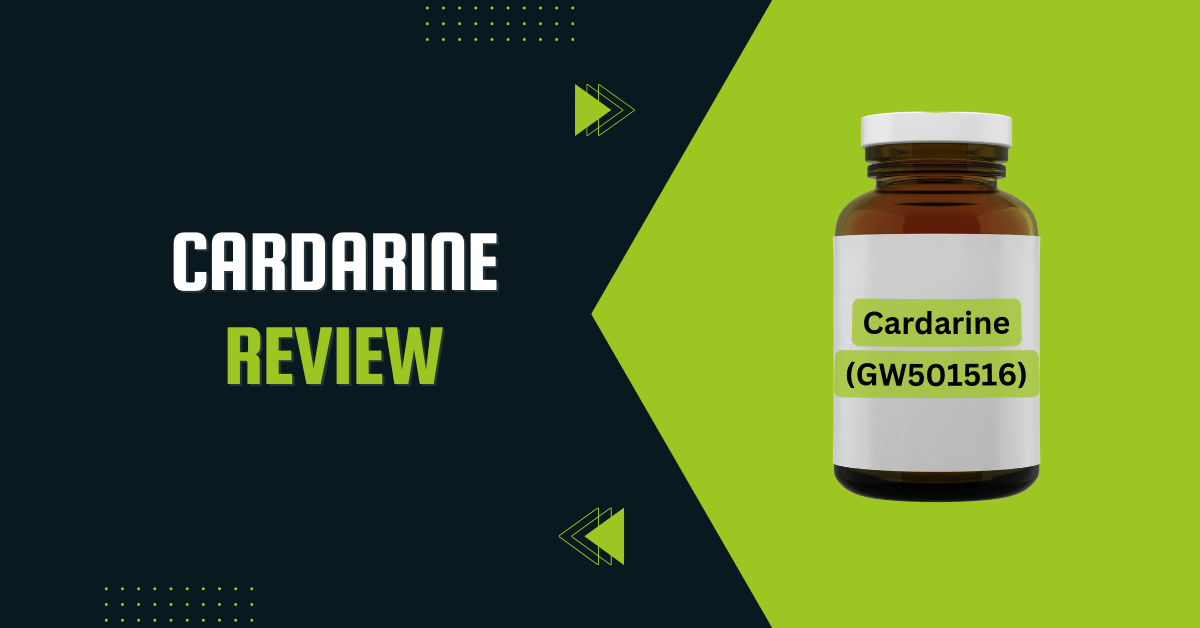Cardarin, known scientifically as GW501516, is a compound that has gained popularity in the fitness community for its potential to enhance performance and support fat loss. Originally developed for treating metabolic and cardiovascular diseases, Cardarin functions by activating the PPARδ pathway, which plays a crucial role in energy metabolism and endurance.
This article explores the mechanism of action behind Cardarin, highlights user experiences and reviews, evaluates potential side effects, and provides practical advice on integrating this compound into your fitness regimen. By understanding Cardarin’s benefits and risks, you can make informed decisions about its use in your fitness journey.
In this article you will find:
Understanding Cardarin and Its Mechanism of Action
Cardarin, often referred to by its chemical name GW501516, is a compound that has gained significant attention in the fitness and performance enhancement community. Originally developed in the 1990s for the treatment of metabolic and cardiovascular diseases, Cardarin functions as a selective androgen receptor modulator (SARM) and is often classified as a PPARδ (Peroxisome Proliferator-Activated Receptor Delta) agonist. This article delves into the mechanism of action of Cardarin, providing a comprehensive understanding of how it works within the body and its implications for fitness enthusiasts.
The Mechanism of Action
Cardarin operates primarily by activating the PPARδ pathway, which plays a crucial role in regulating lipid metabolism, glucose homeostasis, and energy expenditure. When Cardarin binds to PPARδ receptors, it triggers a series of biological processes that enhance the body’s ability to burn fat and utilize energy more efficiently. Here’s a closer look at how this mechanism unfolds:
- Increased Fat Oxidation: Cardarin promotes the oxidation of fatty acids, meaning that the body is more efficient at converting stored fat into usable energy. This can lead to improved endurance during workouts and a reduction in body fat over time.
- Enhanced Endurance: By improving the body’s metabolic pathways, Cardarin allows for longer and more intense exercise sessions. Users often report increased stamina and reduced fatigue, making it a popular choice among athletes and bodybuilders.
- Improved Glucose Metabolism: Cardarin also influences glucose metabolism, which can lead to better blood sugar control and a reduced risk of insulin resistance. This is particularly beneficial for those engaged in high-intensity training.
Potential Benefits for Fitness Enthusiasts
The unique mechanism of action of Cardarin presents several potential benefits for individuals looking to enhance their fitness journey:
- Fat Loss: By facilitating fat oxidation, Cardarin can help users achieve a leaner physique, which is often a primary goal for many fitness enthusiasts.
- Performance Enhancement: Improved endurance and stamina can lead to enhanced athletic performance, allowing individuals to push through plateaus and achieve new personal bests.
- Muscle Preservation: During caloric deficits, Cardarin may help preserve lean muscle mass, which is crucial for maintaining strength and physique.
Research and Studies
While anecdotal evidence and user testimonials highlight the benefits of Cardarin, it is essential to consider scientific research. A study published in the journal Nature demonstrated that PPARδ activation could promote endurance and improve metabolic health in animal models. However, human studies are still limited, and the long-term effects of Cardarin remain under investigation. For a deeper dive into the research, you can refer to this scientific article.
As you explore Cardarin’s potential, it’s crucial to consider your fitness goals and consult with a healthcare professional before incorporating any new supplement into your regimen. Understanding the mechanism of action behind Cardarin sets the foundation for evaluating its effects, user experiences, and potential side effects, which will be discussed in subsequent sections.
Exploring User Experiences and Reviews of Cardarin
User experiences and reviews play a significant role in understanding the effectiveness and safety of Cardarin, especially for those considering its use as part of their fitness routine. As a compound that has gained popularity in fitness circles, user testimonials can offer valuable insights into its real-world applications and potential benefits. This section examines various user experiences, highlighting common themes, benefits reported, and the overall sentiment within the fitness community.
Common User Experiences
Many users of Cardarin report a range of experiences, with a focus on performance enhancement and fat loss. Here are some prevalent themes found in user reviews:
- Enhanced Endurance: A significant number of users report noticeable improvements in their stamina and endurance levels. This is particularly beneficial for athletes engaged in high-intensity training or endurance sports. Users often mention being able to perform longer workouts without experiencing the typical fatigue.
- Fat Loss and Body Composition: Many individuals have shared positive feedback regarding fat loss while using Cardarin. Users report that they were able to shed unwanted body fat while maintaining or even increasing their muscle mass, which is a common goal for fitness enthusiasts.
- Improved Recovery Times: Another frequently mentioned benefit is faster recovery times between workouts. Users have noted that they feel less sore after intense training sessions, allowing them to train more frequently and effectively.
Positive and Negative Reviews
While many users praise Cardarin for its benefits, it is essential to acknowledge that experiences can vary widely. Here are some positive and negative aspects reported by users:
Positive Aspects
- Motivation Boost: Users often mention feeling more motivated to work out, attributing this to the increased energy levels and improved performance.
- Versatile Usage: Cardarin is used by a diverse range of individuals, from bodybuilders to casual gym-goers, indicating its adaptability to various fitness goals.
Negative Aspects
- Potential Side Effects: Some users have reported mild side effects, such as headaches or digestive issues, which can vary in severity. It’s essential for potential users to be aware of these possibilities.
- Regulatory Concerns: Due to its classification and the lack of extensive human studies, some users express caution regarding the long-term safety of Cardarin. This sentiment emphasizes the importance of consulting with healthcare professionals before use.
Community Insights and Discussion Forums
Online forums and fitness communities, such as Reddit and bodybuilding.com, serve as platforms where users share their experiences and opinions about Cardarin. These discussions often provide a wealth of information, revealing both anecdotal evidence and personal stories. Users frequently exchange tips on dosage, cycling methods, and stack recommendations, creating a collaborative environment for those interested in performance enhancement.
For example, a discussion on Reddit’s SARMs community showcases various user journeys, including detailed logs of their progress and personal insights into their Cardarin experiences. These platforms can be invaluable for gathering diverse perspectives and making informed decisions.
Conclusion of User Experiences
In summary, user experiences with Cardarin present a mixed but predominantly positive narrative, with many praising its performance-enhancing benefits and fat loss properties. However, as with any supplement, individual experiences can vary, and potential users should conduct thorough research and consult healthcare professionals before starting Cardarin. As we transition to the next section, we will delve into the potential side effects associated with Cardarin use, providing a balanced view of its safety profile.
Evaluating the Potential Side Effects of Cardarin
As with any supplement or performance-enhancing compound, understanding the potential side effects of Cardarin (GW501516) is crucial for informed decision-making. While many users report positive experiences, it is essential to consider the risks associated with its use. This section evaluates the potential side effects, based on user testimonials and scientific research, to provide a balanced view of Cardarin’s safety profile.
Commonly Reported Side Effects
Despite its popularity, users have reported various side effects when using Cardarin. Although many individuals tolerate the compound well, some common issues include:
- Headaches: Some users have experienced headaches, which may be attributed to changes in blood flow or dehydration. Staying adequately hydrated can mitigate this effect.
- Digestive Issues: Gastrointestinal discomfort, including nausea or stomach upset, has been reported by some users. It is advisable to start with a lower dose to assess tolerance.
- Fatigue: While Cardarin is often associated with increased endurance, a subset of users has noted feelings of fatigue or lethargy, particularly during the initial phases of use.
Long-Term Health Concerns
Beyond immediate side effects, there are concerns regarding the long-term health implications of Cardarin use. Some research suggests potential risks, such as:
- Impact on Cholesterol Levels: Some studies indicate that Cardarin may alter lipid profiles, potentially leading to increased LDL (bad cholesterol) levels. This could pose risks for cardiovascular health if not monitored.
- Potential Carcinogenic Effects: Animal studies have raised concerns about the long-term use of Cardarin and its association with cancer development. While the relevance of these findings to humans remains uncertain, they warrant caution.
Regulatory Status and Safety Considerations
Cardarin is not approved for human use by the Food and Drug Administration (FDA) and is classified as a prohibited substance by the World Anti-Doping Agency (WADA). This regulatory status highlights the need for users to exercise caution and consider the legal implications of using Cardarin in competitive sports.
For those contemplating its use, it is crucial to consult with a healthcare professional, especially if there are pre-existing health conditions or concerns about interactions with other medications. Additionally, individuals should consider sourcing Cardarin from reputable suppliers to avoid contamination and ensure product quality.
Monitoring and Managing Side Effects
If you choose to use Cardarin, monitoring your body’s response and adjusting your regimen accordingly is vital. Here are some strategies to help manage potential side effects:
- Start with a Low Dose: Initiating with a lower dose allows your body to adjust and helps identify any adverse reactions early on.
- Stay Hydrated: Maintaining proper hydration can help alleviate headaches and digestive discomfort.
- Regular Health Check-Ups: Frequent check-ups can help monitor cholesterol levels and overall health while using Cardarin.
In conclusion, while Cardarin may offer potential benefits for performance enhancement and fat loss, it is accompanied by a range of side effects and long-term health concerns that should not be overlooked. For more detailed information on the safety of performance-enhancing substances, refer to the National Institutes of Health for research insights and guidelines.
Integrating Cardarin into Your Fitness Regimen
For those considering the addition of Cardarin (GW501516) to their fitness regimen, understanding how to effectively integrate this compound is crucial for maximizing its potential benefits while minimizing risks. This section will provide practical guidance on dosage, timing, and stacking strategies to help you incorporate Cardarin into your workouts safely and effectively.
Determining the Right Dosage
Finding the optimal dosage of Cardarin is essential for achieving desired results without experiencing adverse effects. While individual responses can vary, here are some general guidelines:
- Standard Dosage: Many users report effective dosages ranging from 10 to 20 mg per day. Beginners are encouraged to start at the lower end of this range to assess tolerance.
- Duration of Use: Cardarin is often cycled for 8 to 12 weeks. Taking breaks between cycles can help reduce the risk of potential side effects and allow your body to reset.
Timing Your Doses
When integrating Cardarin into your regimen, timing can play a significant role in its effectiveness:
- Pre-Workout Timing: Taking Cardarin about 30 to 60 minutes before your workout can enhance endurance and stamina, allowing you to push through intense sessions more effectively.
- Consistent Daily Use: For optimal results, it is advisable to take Cardarin consistently each day, regardless of workout schedules, to maintain stable levels in your system.
Stacking Cardarin with Other Compounds
Some users choose to stack Cardarin with other performance-enhancing substances to amplify results. Here are some common compounds that can be stacked effectively with Cardarin:
- SR9009 (Stenabolic): Known for its ability to boost endurance and fat loss, this compound can complement Cardarin’s effects, enhancing overall performance.
- Testosterone Boosters: Supplements that promote testosterone levels can help preserve muscle mass and enhance recovery, making them a suitable addition to a Cardarin regimen.
Monitoring Progress and Adjusting Your Regimen
As with any supplement, monitoring your progress while using Cardarin is crucial. Here are some strategies to help track your results and adjust your regimen as needed:
- Keep a Workout Log: Document your workouts, including duration, intensity, and perceived energy levels. This can help you identify patterns and assess the effectiveness of Cardarin on your performance.
- Track Body Composition: Regularly measure body weight and body fat percentage to evaluate any changes in your physique, ensuring that Cardarin is aligning with your fitness goals.
- Listen to Your Body: Pay attention to how you feel during workouts and throughout the day. If you notice any adverse effects, consider adjusting your dosage or consulting a healthcare professional.
Complementing Cardarin with Proper Nutrition and Training
To maximize the benefits of Cardarin, it is essential to pair it with a well-rounded nutrition plan and a structured training program:
- Nutrition: Focus on a balanced diet rich in whole foods, including lean proteins, healthy fats, and complex carbohydrates. Proper nutrition will support your fitness goals and enhance the effectiveness of Cardarin.
- Training Program: Implement a structured training program that includes both strength training and cardiovascular workouts. Cardarin can enhance your endurance, but a solid training foundation is essential for achieving overall fitness.
For more insights on nutrition and training strategies, consider visiting reputable fitness resources such as Bodybuilding.com for comprehensive guides and articles.
Integrating Cardarin into your fitness regimen requires careful planning and consideration. By determining the right dosage, timing your intake, and stacking it with compatible compounds, you can effectively enhance your workout performance. Remember to monitor your progress and complement Cardarin with proper nutrition and training to achieve the best results. Cardarin (GW501516) is a compound that enhances performance by activating the PPARδ pathway, improving fat oxidation, endurance, and glucose metabolism. Users often report significant benefits, including increased stamina, fat loss, and faster recovery times. However, potential side effects such as headaches, digestive issues, and concerns about long-term health risks like altered cholesterol levels and possible carcinogenic effects should be carefully considered.
To integrate Cardarin effectively into your fitness regimen, start with a dosage of 10 to 20 mg per day, cycling it for 8 to 12 weeks. Timing your doses before workouts can enhance endurance, while monitoring your progress and maintaining a balanced diet and structured training program will optimize results. Always consult with a healthcare professional before starting Cardarin to ensure safety and effectiveness.




